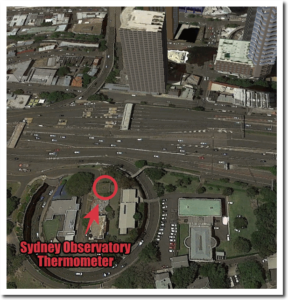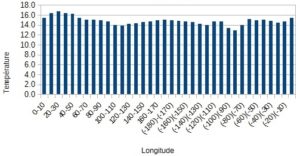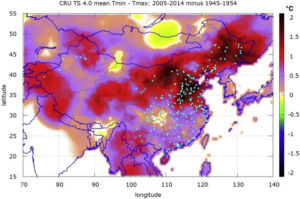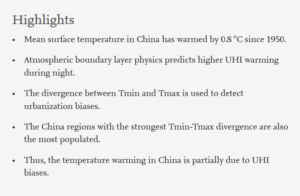by Dr. Roy Spencer, Apr 5, 2023 in WUWT
From Dr. Roy Spencer’s Global Warming Blog
by Roy W. Spencer, Ph. D.
As I spend more time working on a research project, the more time I have to reflect on things that others have simply assumed to be true. And in the process I sometimes have an epiphany than clarifies my thinking on a subject.
As I continue to investigate how to quantify urban heat island (UHI) effects for the purpose of determining the extent to which land surface temperature trends have been spuriously inflated by urbanization effects, there is one recurring theme I find has not been handled well in previously published papers on the subject. I’ve mentioned it before, but it’s so important, it deserves its own (brief) blog post.
It has to do with the common assumption that “urban” thermometer sites experience spurious warming over time, while “rural” sites do not.
Obviously, at any given point in time urban environments are warmer than rural environments, especially at night. And urbanization has increased around temperature monitoring sites over the last 50 to 100 years (and longer). Yet, a number of studies over the years have curiously found that urban and rural sites have very similar temperature trends. This has led investigators to conclude that temperature datasets such as the Global Historical Climate Network (GHCN), especially after “homogenization”, is largely free of spurious warming effects from urbanization.
But the conclusion is wrong…all it shows is that temperature trends between rural and urban sites are similar… not that those trends are unaffected by urbanization effects.
Instead, studies have demonstrated that the greatest rate of warming as population increases is for nearly-rural sites, not urban. The one-fourth power relationship found by Oke (1973) and others (and which I am also finding in GHCN data in the summer) means that a population density increase from 1 to 10 persons per sq. km (both “rural”) produces more warming than an urban site going from 1,000 to 1,700 persons per sq. km.
Thus, “rural” sites cannot be assumed to be immune to spurious warming from urbanization. This means that studies that have compared “rural” to “urban” temperature trends haven’t really proved anything.
The mistake people have made is to assume that just because urban locations are warmer than rural locations at any given time that they then have a much larger spurious warming impact on trends over time. That is simply not true.











